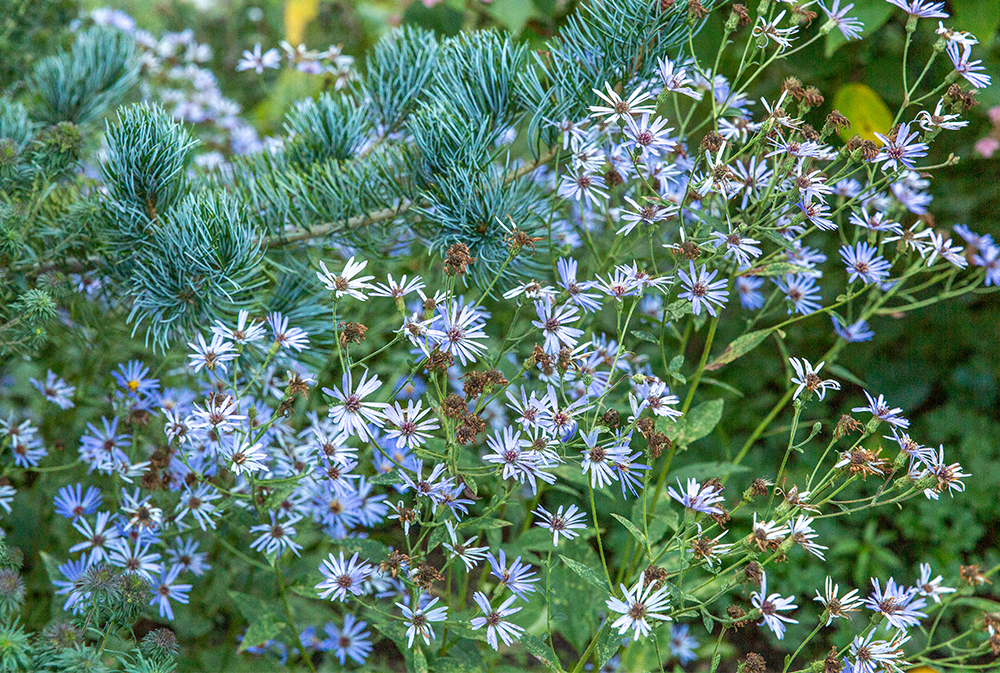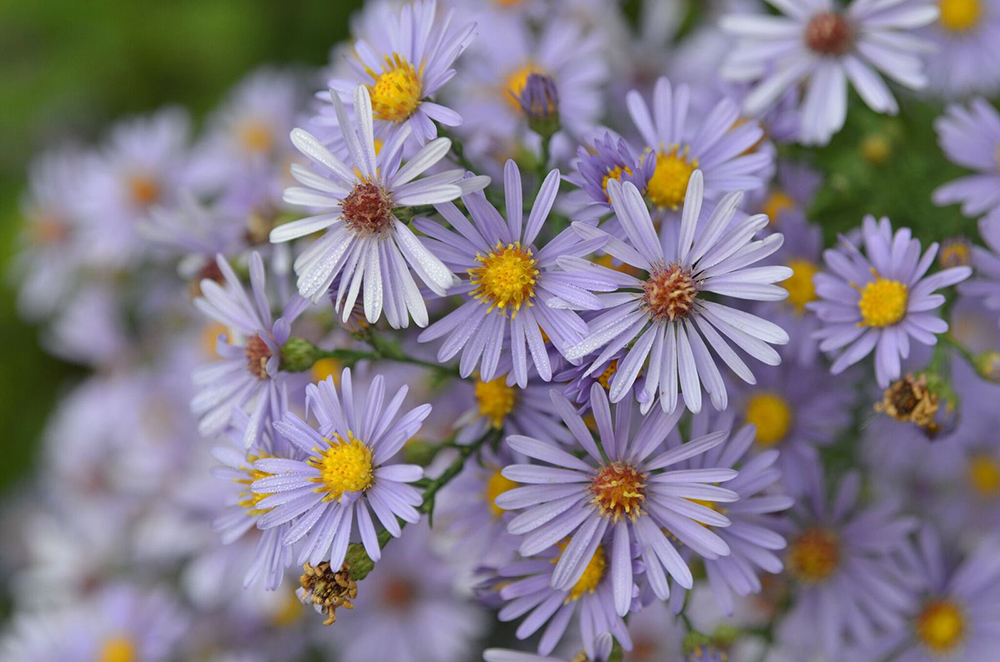Aster laevis 'Bluebird'
(Syn: Symphyotrichum laeve)
Aster-Smooth
Aster laevis 'Bluebird'
(Syn: Symphyotrichum laeve)
Aster-Smooth
Ranked highest in trials by introducer Mt. Cuba Center, this prolific, fall-blooming aster produces airy sprays of lavender blue flowers with yellow centers on arching branches. Perfectly clean foliage makes it easy for growers and gardeners alike. Pinch in early summer to promote denser habit and fuller finished plants.
Plant Details
- Zone: 4 - 8
- Height: 36-48"
- Spread: 24-30"
- Exposure: Full Sun, Part Shade
- Soil Moisture: Low Water Needs, Moderate Water Needs
- Drought tolerant: No
- Bloom time: Early Fall, Mid-Fall
- Foliage Color: Green Shades
- Flower Color: Blue Shades
- Fragrant: No
- Good Cut Flower: Yes
- Native: Nativar
- Deer resistant: Yes
- Rabbit resistant: No
- Bee-friendly: Yes
- Attracts butterflies: Yes
- Attracts hummingbirds: No
- Groundcover: No
- Roy Diblik Favorite: No
Plant Details
- Zone: 4 - 8
- Height: 36-48"
- Spread: 24-30"
- Exposure: Full Sun, Part Shade
- Soil Moisture: Low Water Needs, Moderate Water Needs
- Drought tolerant: No
- Bloom time: Early Fall, Mid-Fall
- Foliage Color: Green Shades
- Flower Color: Blue Shades
- Fragrant: No
- Good Cut Flower: Yes
- Native: Nativar
- Bee-friendly: Yes
- Deer resistant: Yes
- Rabbit resistant: No
- Attracts butterflies: Yes
- Attracts hummingbirds: No
- Groundcover: No
- Roy Diblik Favorite: No
Grower Information
Plant your Aster crop in spring for late summer and fall sales opportunities along with Rudbeckia, Eupatorium, Vernonia and fall grasses. Asters are heavy feeders, but it is best to discontinue feeding once they begin to bloom. Pinching is beneficial to promote lateral branching.
- PowerPlug Size(s): 32s
- Optimal Planting Time: Spring
- Retail Sales Window: Fall, Summer
- Moisture in Production: Average
- Requires Shade in Production: No
- Vernalization Required for Bloom: No
- Vernalization Beneficial: Yes


